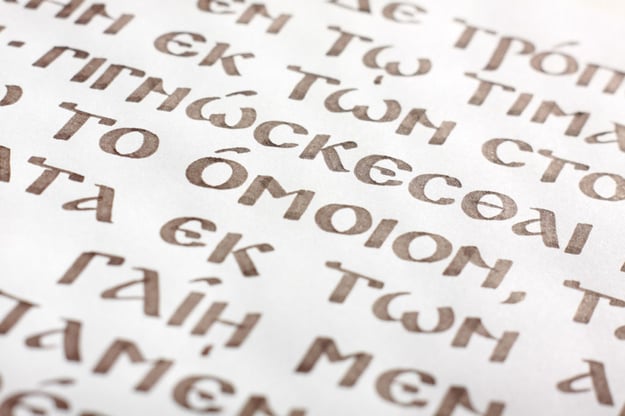-2.png)
Derived from the Greek word διγλωσσία, which is defined as bilingualism, diglossia is a linguistic phenomenon in which a language has two varieties often labeled as a high variety ("H") and a low variety ("L").
The specialized meaning of the term was coined by Emmanuel Rhoides in 1885 and was subsequently adapted into other languages, like the French "diglossie" and Spanish "diglosia", to denote this side-by-side linguistic coexistence.
In this article, we will take a look at what diglossia is and how different languages or varieties are used, as well as the effects of diglossia on translation.
What is diglossia?
The term was first used to describe the situation in which a community strictly uses the high variety ("H") in formal situations, such as literature and mass media, and the low variety ("L") in ordinary conversations.
This means that the two varieties are closely-related and inherently belong to the same language. Historically, the high variety was usually used at an earlier stage of the language, such as Classical Latin, and the low variety diverged as a continuum from colloquial speech, such as Vulgar Latin.
However, the term was later expanded to include communities in which the high variety and the low variety were unrelated languages. An example of this is Jamaican Creole, which is regarded as the low variety, and standard English, which is regarded as the high variety in Jamaica.
In what situations can diglossia be observed?
In communities where diglossia is present, the low variety is the language of the home, friends and informal interactions. The high variety is held in high esteem and rules the sphere of politics, education and translation services.
Most speakers of diglossic languages will know that the low variety usually has no grammatical rules or established writing system. This makes its translation socially inappropriate, as it may not be suitable for the situation. On the other hand, the high variety has fewer native speakers as it is not used in everyday settings and is typically characterized by more complex grammatical rules.
Looking at the situation from this perspective, does this mean it is impossible to hire native translators for diglossic languages, such as Arabic, German or Chinese?
In the case of same-language diglossia, the low variety is strongly subordinated by the high variety. Technically speaking, the low variety has the tendency to generate words from the high variety in most cases. This makes the two varieties mutually intelligible, to some extent.
In Arabic, most of the low variety terms are derived from the high variety, while denoting a change in the pronunciation. One example is the pronunciation of the "g" in "generous" as the "g" in "garden", which is highly noticeable in Egyptian Arabic. Despite this divergence, the high variety is widely understood by Arabic speakers, although not used in vernacular speech.
More information: Arabic Translation: An Overview of Arabic Dialects
How does diglossia affect translation?
In translation studies, diglossia can cause linguistic weakness in students. This is because they spend the first few years of their lives learning the vernacular type of the language and the next few years learning the high prestige form.
Another complication is the possible confusion between the high variety and the low variety. The students are equally exposed to the vernacular speech pattern and the high prestige speech pattern, which can lead to the two varieties overlapping. As mentioned before, the use of the low variety in formal situations is, in many cases, frowned upon. This possible linguistic weakness can be remedied by additional effort, practice and exposure to the high variety.
The goal of professional translators should be to create a further division between these two varieties in order to use each one of them for the intended purpose. As it is defined in the Greek language, diglossia is, after all, just another form of bilingualism.
Recommended reading: The Future of Professional Translators: Combining Skills and Technology for Effective Global Communication
At Pangeanic, we have a pool of over 25,000 professional translators, each of whom are experienced experts in their field. Finding the right fit for your translation is essential, and even more so when it comes to targeting communities where the phenomenon of diglossia is present.
Contact us and we will assess your needs and offer you a custom solution.


